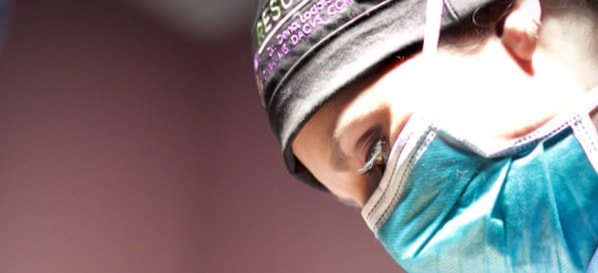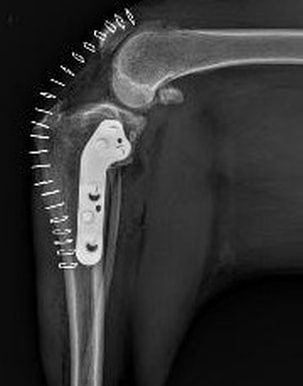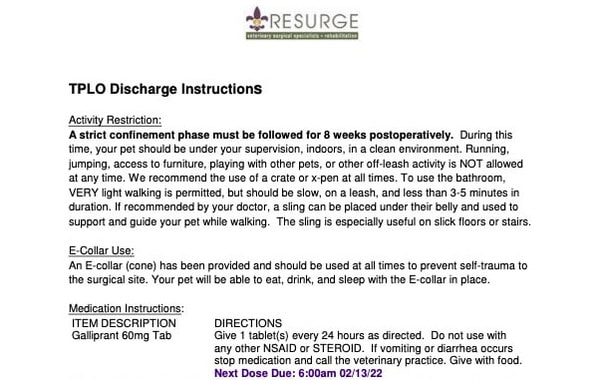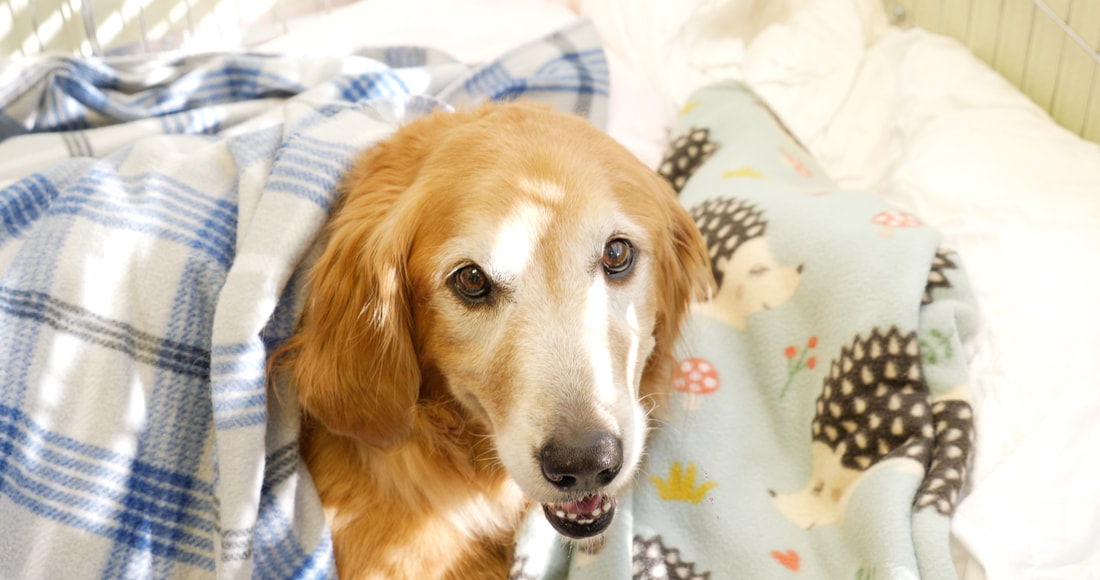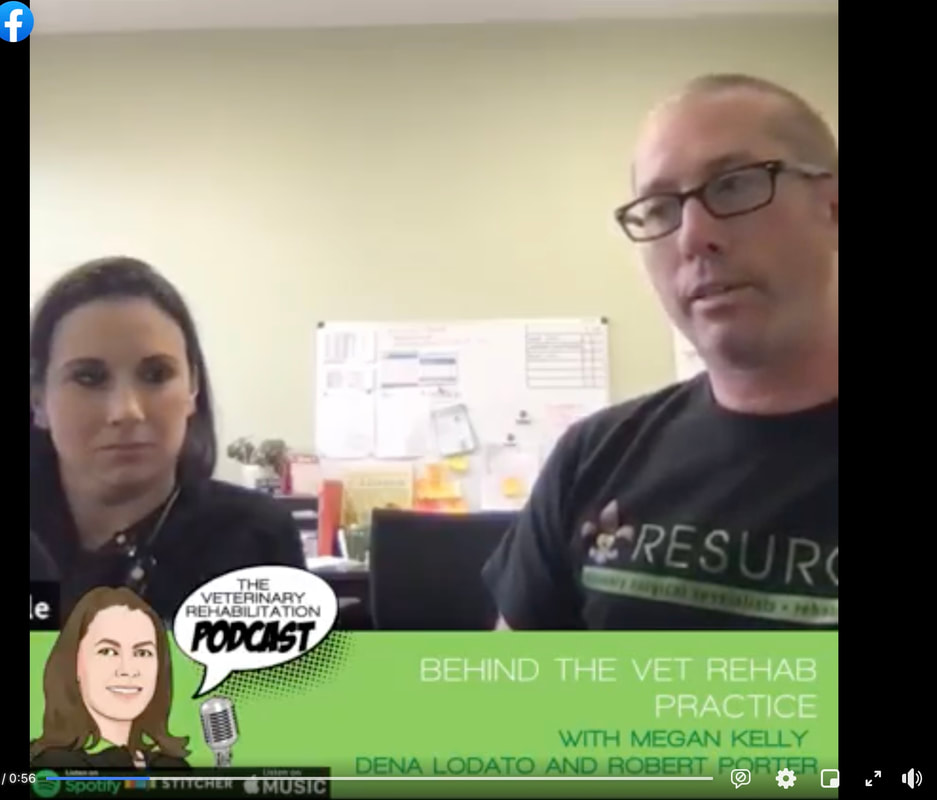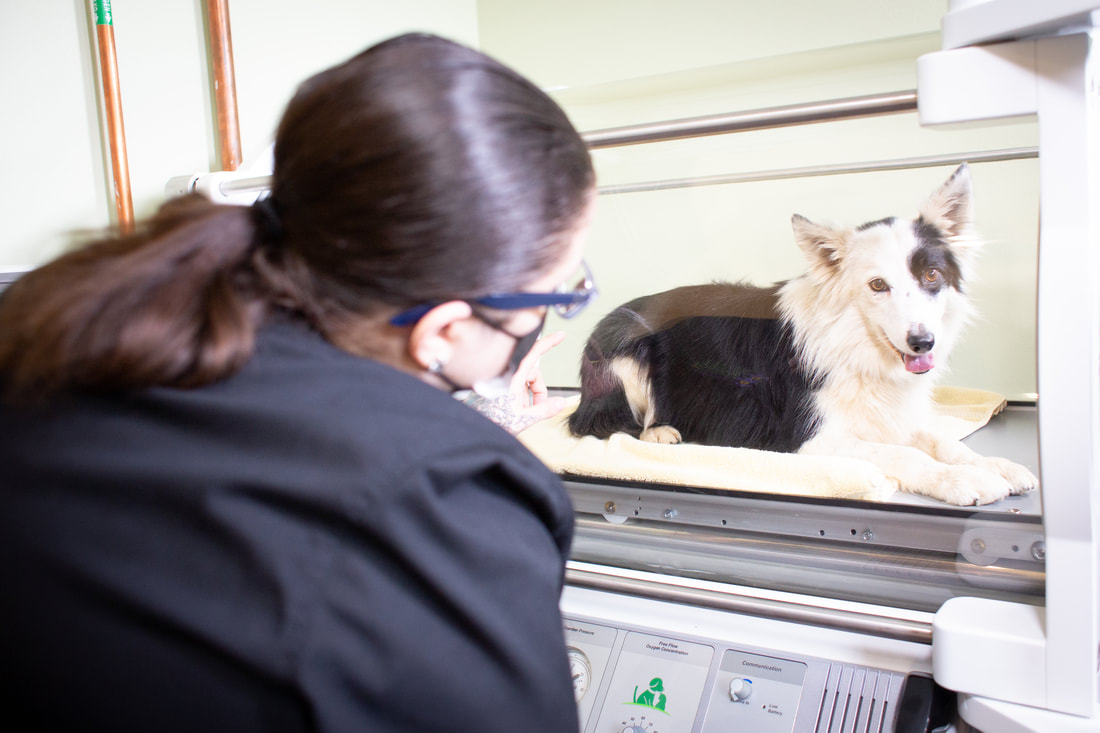|
We all had a blast at Krewe Du Pooch 2022 this past Saturday! Thank you to all the organizers, volunteers, sponsors, and every paw that made it a success. Events like these save lives and we were so happy to be a part of it! Hope to see you all next year!
Who’s going to Krewe du Pooch? We set aside a little time to try on our costumes for the Krewe du Pooch parade that we will be walking in as part of Queen Sadie Elizabeth’s royal court, or as we like to call it, her Blessing. However, Queen Sadie did not feel like getting out of bed that morning for dress rehearsal. Must be nice to be a Queen, lol. Fact: A group of unicorns is called a “Blessing” and we feel truly blessed to have the hard working staff and growing culture that we have harnessed in this past year. A big THANKS to everyone who stayed after their shifts or worked extra hard to be able to dress up, as well as everyone that took care of our patients while we goofed off for a few minutes. Every one of you makes Resurge Veterinary Surgical Specialists and Rehabilitation a true blessing to come to work each day. Thank you all! We hope to see you all at the parade on March 5th, 2022 at the Mandeville Lakefront! Please visit the link below to register: https://www.krewedupooch.org
Do you have any tips or tricks that helped you and your dog during TPLO surgery recovery? Please leave your comments below and help others that are going through the same situation.
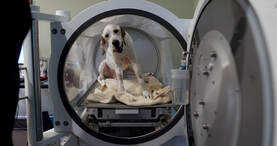 Buddy had a poor prognosis when he was first referred to our physical rehabilitation service. Dr Yates at Baton Rouge Veterinary Specialists had diagnosed Buddy with multiple micro hemorrhages/bleeds in his midbrain. Buddy had a lot to overcome. He couldn’t get up or walk on his own, has a heart murmur, and laryngeal paralysis. He also had developed several pressure sores from being unable to get up for so long. Our therapists, Robby Porter CCRP and Melissa O’Brien RVT, CCRP, worked with Buddy daily for almost 4 weeks straight to help him regain function and independence. Each day they rewarded Buddy for simple tasks and in turn Buddy rewarded them with more motivation and drive to get better. We utilized hyperbaric oxygen and LASER therapy, however the bulk of Buddy’s care and success was due to our therapists skills and a few rolls of kinesiology tape. Knowledge, wisdom, bravery, passion and love, beyond any technology are the cornerstones of overcoming adversity. We should all be a little more like Buddy, our world could be a much nicer place. #caninerehabilitation #strokevictim #brainbleeds #resurge #resurgeveterinary #passion #love #wisdom #bravery Sally sustained multiple injuries after being struck by a car. One of her rear legs was broken and fixed before she was referred to Resurge. However, both of her front legs held a poor prognosis for recovery due to the severity of her injuries. Her left front limb had what is called a brachial plexus avulsion. The brachial plexus is a bundle of nerves under the shoulder blade or scapula and it had been so severely damaged that Sally was unable to feel or use the limb. There was no chance of her recovering feeling of it. Her right front leg had one fo the worst fractures a dog could have. The very top part of her upper leg bone, the humeral head, was broken off. This left a very small fragment for Dr Dena Lodato to put together. Sally also was in a lot of pain, even though she didn’t show it much, she had been suffering and basically using her head as a limb to get around while recovering from her rear leg fracture. Dr Lodato was able to bring Sally to surgery and fix her broken front leg. At the same time Dr Lodato also amputated her left front leg since it had no chance of recovering feeling or function. After 8 weeks of physical rehabilitation including advanced therapeutic exercise, LASER therapy and a lot of love, Sally was able to discover new movement, begin a new life as a puppy and move onto a new beginning after a horrific ordeal. Good luck on all your journeys, Sally! We will all miss you!!!! Dr. Dena Lodato and Robert Porter CCRP had the opportunity to sit down with Dr. Megan Kelly for her podcast, Behind the Vet Rehab Practice. They discussed many of the challenges of opening a new veterinary clinic in the middle of a pandemic, our clinic culture, renovation, the importance of physical rehabilitation in the surgical practice, treatment modalities and marketing. We’ve been open for 10 months now and couldn’t be happier with the response and support from our local and worldly veterinary communities. Thank you Megan for all you do and have done for veterinary physical rehabilitation. You help us all continue to learn and share our experiences, ultimately creating better practitioners that can help more animals through their difficult journeys.
If you have a quick minute, give it a listen! https://podcasts.apple.com/.../the.../id1277186348... Sebastian, affectionately known as Sea Bass, acutely lost all function of his right rear limb. He sustained what is called a fibrocartilaginous embolism or FCE for short. We were able to see Sea Bass just 4 days after the emboli and got straight to work on him. After just 6 sessions he was significantly better and was able to return to his normal farm dog life in the country. Stay out of trouble Sebastian. We will miss your antics! #resurge #caninerehab #kenesiotape #underwatertreadmill #photobiomodulation #FCE #fibrocartilaginousembolism 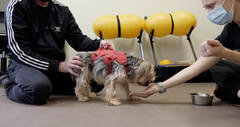 Carl was a young and healthy dog that suddenly was unable to walk or move. His owners took him to his regular veterinarian who then referred him to Resurge for further assessment and recommendations. Dr. Lodato preformed a CT scan to look for any compression to his spinal cord that would explain his symptoms, but there was no compression. No compression means that there was no surgical intervention that would benefit Carl. Pet parents generally are very confused about this type of situation, and rightfully so. Having a young, seemingly healthy four legged friend one day, then having them lose their ability to move is stressful to say the least. Carl’s mom was obviously very upset and we did our best to try to explain to her that this was actually good news. We suspected that Carl had what’s called a high validity, low volume disc extrusion. Meaning that a disc in his back had ruptured but left only the evidence of spinal cord inflammation. Carl woke up from anesthesia after his CT scan and showed some improvements in motor function. In veterinary neurology, any sign of improvement this early out in an acute problem like Carl's, generally yields a fairly good prognosis. It was decided that Carl would stay with us at Resurge for physical rehabilitation for the rest of the week, then we would reevaluate his condition and decide how or if treatment should continue. During his first week we started hyperbaric oxygen treatments and LASER therapy. Both of these treatments would help reduce inflammation in his spinal cord as well as help with any pain he was experiencing. Inflammation of his cord was really his problem and treatments appeared to be helping him very quickly. We also started therapeutic exercises to help target functional tasks that Carl needed so that he could be able to live with good quality of life. 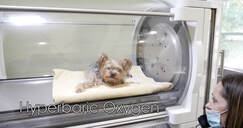 Each day Carl stayed with us, he improved. Carl was almost able to walk on his own, but we had to stop treatment and send him home due to the impending doom of Hurricane Ida advancing on the Gulf Coast. We were all hoping that Ida would not be as big or damaging as forecasted, however it was probably worse. Carl’s mom picked him up the Friday before Ida and did the best she could to care for him and herself throughout the storm. They did great despite the physical challenges that were upon us. Carl came in this past Monday and Tuesday for his final treatments and continued to excel and improve. For the short week and a half that Carl stayed with us, everyone fell in love with him. He always loved any attention given to him, he worked hard and he never gave up on a task that was asked of him. The last couple of weeks have been very hard for us who were effected by Hurricane Ida. Loss of property, communication, electrical power, and the financial stress of Ida has taken a toll on us all. I always admire the strength that dogs like Carl have. Their determination and the “never give up” attitude is always inspiring and helps put life into perspective, especially during times like this. I hope everyone who watches Carl’s video can find some happy moments in their recent struggles and that he can help those effected to continue on with a positive attitude despite their losses. 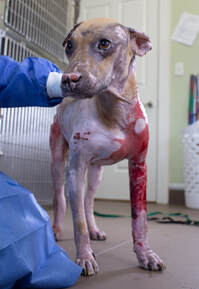 When I first met Sadie, all I could imagine was her being trapped in her dog house and backed into a corner by a blaze that was taking over where she had usually slept. The burns she had sustained told a horrific story. Her left front leg and the entire left side of her body had the deepest burns. They were full thickness, meaning that she had nothing that was living covering her muscle tissue. She had most likely turned around several times looking for a way out, as her right side was also burned badly, but not full thickness. Before the fire started, she may have felt warm for the first time in a week, since it had been unusually cold in Louisiana during the time that she had sustained her burns. That warmth and comfort likely didn’t last very long, as the space heater that was placed in her dog house along with a nest of straw caught her hay bed on fire. She survived five days in her badly burned condition before we saw her. She was taken to Dr. Liza Ledet, DVM at Mandeville Animal Hospital by her owner. Dr. Ledet referred her to us here at Resurge for hyperbaric oxygen therapy and advanced wound care. None of us, even the senior staff, had ever seen a dog with that much of her body burned before. Part 1: Sadie's Severe Burn Injuries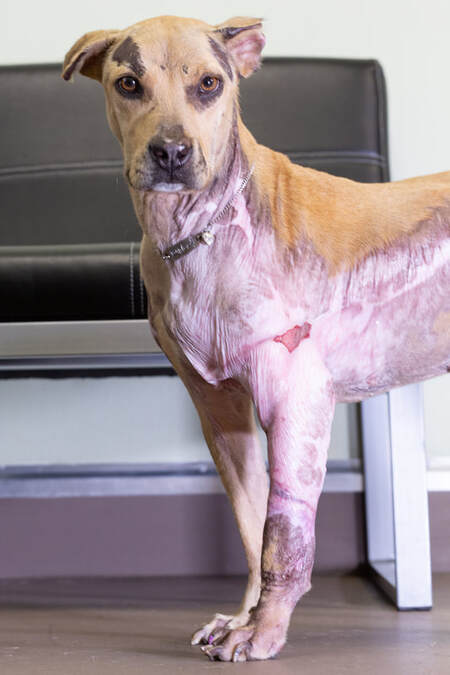 I remember seeing a dog early in my career that had been stuck under a muffler after being hit by a car, but he was no where near as bad as Sadie was. I decided that I needed to film her journey. I knew it was going to be a long one, and if she lived, then maybe she could be an inspiration to people going through similar traumatic experiences. Sadie’s journey truly has been a long one. She’s had more bandage changes than any other dog I have had the pleasure to help and she continues to surprise me with her strength and willingness to learn, despite her tragic past. The above video is part 1 of 3 and shows how difficult her journey has been. Parts 2 and 3 will be published soon, so please check back to see her whole story. We all hope you can fall in love with her just as much as we have and see her strength as an inspiration the way we do. Part 2: Sadie's ResurgenceNeurological recovery is difficult for patients, but it can be hard for caregivers as well. Neurology can be intimidating to learn about or understand, especially if it is concerning a loved one. Recoveries can be fast for some patients and torturously slow for others. Veterinary neurological patients can sometimes take many months to get better depending on their individual diagnosis and prognosis. The uncertainty of how much recovery will take place and how long it will take to get there is also a difficult reality for everyone involved. It takes a team approach to care for animals recovering from a neurologic insult and we want you to understand as much as possible so that you can also be part of that team. We are here to help and we do our best to clearly communicate your pet’s prognosis based on history and scientific evidence. In the below blog post we will address several topics that people commonly have questions about. If your pet is a Resurge patient and you have questions about them please contact our office anytime and we will be happy to help. Topics covered in this post:
Bladder expression Following neurologic injury or surgery some patients may need their urinary bladder manually expressed. The nerves that allow normal urination may be inflamed or damaged, leading to the patient to be unable to urinate on their own. Urinary bladders can become overfilled, distended, and if left un-expressed can have irreversible effects on the patient’s ability to urinate on their own. Neurologic patients can also be prone to bladder infections. These can be uncomfortable and can sometimes lead to setbacks in recovery. Bladder expression is not an easy task to master. Give yourself some time to learn how to do it and please contact your veterinarian if you are having problems. Medications Most patients will go home with several medications after surgery. Among other benefits, these medications are there to help prevent infection and/or decrease pain and muscle spasms. Pain and discomfort can delay recovery and medications should be given unless your pet seems to be having a problem with taking them. Your pet may be on several different kinds of medications all geared at the same goal. Some owners feel overwhelmed with the amount of meds, but they are all there for specific reasons. Please follow the directions on the pill bottles, and if there is any questions, these instructions will be reiterated on your pet’s surgical discharge summary inside the folder which is sent home at the time of discharge. Many recovering dogs feel great after surgery because we are treating their pain. For those who are sore and tender, this pain will subside shortly and most patients come off of medications at or around the 2-4 week postoperative date. Please watch the video below on how to give medications. It will give you some tips and tricks to keep your loved one out of pain and assist in keeping bad tasting medications from being spit out. Incision care The most common places to have incisions from a veterinary neurological surgery are on the back over the spine and under the neck. Both of these areas are difficult for patients to lick, but regardless it is important to keep a close eye on them to make sure they are not able to get to their incision site. Licking can cause infection, and infection can lead to serious complications. If your pet had surgery at Resurge, then incisional care is minimal. You should NOT clean the area, you should NOT put topical medications on it, or really do anything to the incision site unless we have outlined it within your surgical discharge summary. Bathing should be avoided until 10-14 days postoperatively. If you feel like your pet’s incision looks bad an any way, please contact us and we will do our best to guide you to the best resolution. Exercise Restrictions/ Confinement Exercise restrictions and confinement are an imperative part of the recovery process. Most pet parents feel like this part of recovery is like locking their loved one in jail, but it is more like a human patient being put on bed rest. Your pet may feel great after surgery and they may want to go back to their normal routines very quickly. However, if your pet has had a hemilamenectomy or a ventral slot, then the normal protocol for keeping them inactive is for 4 weeks post surgery. This timeframe allows proper time for tissue healing. How they feel or act has nothing to do with tissue healing time, therefore please do not allow any more activity than is outlined in their surgical discharge summary. Surgery discharge summaries generally state that patients can be brought outside to go to the bathroom for 5 minutes maximum, 3-4 times a day. When inside they should be confined to a crate or kennel. Large dogs can be put in an exercise pen. Confinement areas should not exceed a 4’X4’ area. Excessive walking can cause weakness and prolong the inflammatory process. This can make patients look like they are not progressing in the recovery process and in some cases cause serious complications. Some patients may have delayed reflexes and/or ataxia (drunk like walking). At times they may think they can do something such as jumping on or off the couch, but fail at it. Avoiding letting them attempt these movements or activities is important because any mishaps can cause severe setbacks in recovery and sometimes irreversible injury to the spinal cord. Some animals may act like nothing has happened and are back to their normal selves very quickly. However, it is wise not to trust your dog, as they do not know what is best for themselves and they do not know when their tissues are healed. It will take at least 4 weeks for those tissues to completely heal after a hemilaminectomy or ventral slot. It will be at least 8 weeks of healing time for spinal fractures. Please reread your discharge summary and follow your doctor’s orders for the best results. Physical Rehabilitation and Recheck Appointments Patients that had neurological surgery here at Resurge are seen by the physical rehabilitation service at about 1 week post operatively. We have found that when we see patients this early we lessen the overall amount and costs of post-op rehabilitation and the outcomes tend to be much better. At this visit you will be seen by one of our therapists. They will go over any concerns or questions you may have and will create a plan for ongoing therapy, if needed. If you would like to learn more about your pet’s first session, please watch the below video. Our surgeon will want to recheck your pet at 4 weeks post operatively before lifting the exercise restrictions. Please make sure you schedule this appointment at the time of surgical discharge from Resurge. If your pet is having abnormal problems with recovery, she will be glad to see them before that. Hyperbaric Oxygen Treatments Resurge Veterinary Surgical Specialists and Rehabilitation LLC, is the only place in the southern states to have a Hyperbaric Oxygen chamber and a certified veterinary hyperbaric oxygen technician. Hyperbaric oxygen can help bring nutrients to healing tissues. It is also very beneficial in reducing inflammation of nervous tissue. Inflammation of nervous tissues is generally the cause of pain and a lack of communication from the brain to the body. All our surgical patients receive one treatment after surgery, however if your pet is not making consistent improvements or cannot walk, then getting them back in for more treatments, sooner rather than later, can have profound positive impacts on recovery. If you would like to pursue more aggressive hyperbaric oxygen treatments, please be sure schedule a visit with one of our therapists or discuss it with the technician at the time of discharge. Assisted Devices Some patients are able to walk on their own, but easily slip on surfaces at home like wood or tile flooring. This is generally due to a lack or proprioception, or internal body awareness. Normally the patient’s feet would send a signal to their brain telling them they are slipping, however in some cases that communication may be delayed, so the patient’s brain doesn’t know the foot is slipping before it’s too late. Some people place runner rugs along the paths that their pet generally walks. This tends to help a lot all by itself. Other patients may benefit from having the hair from between their toes trimmed. This allows more of their pad to come in contact with the ground, leading to more traction. Toe Grips can also help by adding more traction for your pet. Toe Grips are small pieces of latex tubing that slide over the dogs toe nail. There is a small “grip zone” that comes into contact with the ground that provides a surprisingly large amount of traction for some patients. Patients suffering from conscious proprioception deficits tend to “knuckle,” or not flip their foot over fast enough to place it on the ground correctly. Most patients don't realize they are placing their foot on the ground incorrectly. Some patients with this type of deficit may benefit from kinesiology taping techniques. K-tape can assist in dorsi-flexion, facilitating a more normal swing phase of gait. It mechanically helps place the foot in a more normal way and may help pattern more normal movement over time. Check out the video below and see how it helped Colton. Wheelchairs
When recoveries are longer than we’d like and/or we have not made much functional recovery in a timely manner, then patients sometimes need assisted devices or products to help them with daily living. Dog wheelchairs can help improve quality of life and allow the patient to feel more independent. It can also assist in building strength in both the front and back legs if properly used and adjusted. However they do not replace the animals limbs. Written by Robert Porter CCRP |
|
Home
Services
About
Contact
Blog
Client Registration Form
Veterinary Referral information
|
|
Contact Us
|

